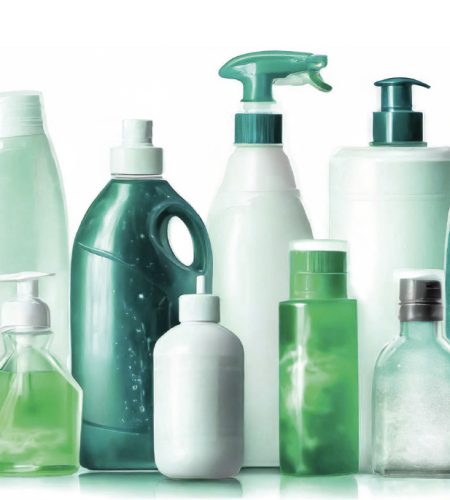
Cosmetic & Detergent

.
Elevate your creations with superior ingredients
We are your reliable source for high-quality cosmetic and detergent chemicals. Our extensive selection and commitment to purity ensure your products achieve the desired performance and aesthetic
What is Citric Acid Anhydrate?
- Appearance: A white, crystalline powder.
- Chemistry: An organic acid with the chemical formula C₆H₈O₇. It’s the anhydrous (water-free) form of citric acid.
- Natural Occurrence: Found in citrus fruits like lemons and limes.
- Production: Commercially produced through fermentation of sugars by specific molds.
Common Uses of Citric Acid Anhydrate
Food and Beverage:
- Flavoring Agent: Adds a tangy, sour taste to foods, candies, and beverages.
- Preservative: Prevents food spoilage and extends shelf life.
- pH Adjuster: Controls acidity levels in foods and beverages.
Cosmetics and Personal Care:
- pH Adjustment: Balances the pH of soaps, shampoos, and other products.
- Chelating Agent: Binds metal ions which can cause discoloration or instability in formulas.
- Bath Bombs: Key ingredient for the fizzing reaction.
Cleaning Products:
- Descaling: Removes hard water buildup and mineral deposits.
- Surface Cleaning: Effective for removing soap scum and stains.
Industrial Applications:
- Pharmaceuticals: Used in effervescent tablets and as a buffer.
- Metal Treatment: Cleans and prepares metal surfaces.
- Other: Applications in photography, cement production, etc.
Advantages of Citric Acid Anhydrate
- Highly Soluble: Dissolves easily in water.
- Safe: Generally recognized as safe (GRAS) by the FDA.
- Multifunctional: Wide range of applications.
- Biodegradable: Breaks down naturally in the environment.
What is Citric Acid Monohydrate?
- Appearance: White, crystalline powder or granules.
- Chemistry: An organic acid containing one water molecule (H₂O) for every citric acid molecule (C₆H₈O₇). Its chemical formula is written as C₆H₈O₇ * H₂O.
- Natural Occurrence: Found in citrus fruits like lemons, limes, and oranges.
- Production: Commercially produced by fermentation of sugars using different strains of mold.
Key Properties
- Similar to Anhydrous: Shares nearly all the properties of citric acid anhydrous, including its tart flavor, acidity, and functionality.
- Water Content: The main difference is the presence of one water molecule per citric acid molecule, creating a slightly lower citric acid concentration by weight.
- Stability: Very stable at room temperature.
Common Uses of Citric Acid Monohydrate
Citric acid monohydrate has virtually the same uses as the anhydrous form:
- Food & Beverages: Flavoring, preservative, pH adjuster.
- Cosmetics & Personal Care: pH balancing, chelating agent, bath bombs.
- Cleaning Products: Descaling, surface cleaning.
- Industrial: Pharmaceuticals, metal finishing, and various other applications.
Citric Acid Monohydrate vs. Anhydrous
- Choice: Often interchangeable. The decision depends on:
- Recipe Requirements: If a recipe specifies one form, it’s important to stick with it.
- Solubility: Anhydrous dissolves slightly faster.
- Desired Concentration: For higher citric acid concentration, anhydrous is favored.
Safety
- Like anhydrous citric acid, the monohydrate form is generally recognized as safe (GRAS) by the FDA.
- Can cause mild skin and eye irritation in concentrated forms.
What is Sodium Bicarbonate?
- Common Names: Baking soda, bicarbonate of soda, sodium hydrogen carbonate
- Appearance: White, fine crystalline powder
- Chemical Formula: NaHCO₃
- Natural Occurrence: Found in the mineral nahcolite, and dissolved in some mineral springs.
- Production: Industrially produced via the Solvay Process, reacting sodium chloride (salt), ammonia, and carbon dioxide.
Key Properties
- Mildly Alkaline: Its pH in water is about 9, offering a basic solution.
- Amphoteric: Reacts with both acids and bases.
- Leavening Agent: Releases carbon dioxide gas when combined with acids and heat, causing bubbles and rise in baked goods.
- Deodorizing: Absorbs odors and neutralizes acidic odor molecules.
Common Uses of Sodium Bicarbonate
Baking and Cooking
- Leavening: Key ingredient in cakes, cookies, quick breads to add a light, airy texture.
- Neutralizing Acidity: Reduces the acidity of tomato-based sauces or balances flavors in recipes.
Cleaning
- Gentle Abrasive: Used as a mild scouring agent to remove stains and grime.
- Deodorizer: For refrigerators, carpets, and other surfaces.
Personal Care
- Antacid: Taken to relieve heartburn and indigestion.
- Toothpaste Ingredient: Offers gentle cleaning and whitening.
- Bath Additive: Soothes skin irritations.
Other Uses
- Fire Extinguishers: Certain types use sodium bicarbonate to smother flames.
- Pool and Spa Treatment: Adjusting water pH.
- Agriculture: Can be used as a natural fungicide.
Safety
- Generally recognized as safe (GRAS) by the FDA in common usage amounts.
- Large amounts can cause electrolyte imbalance, caution advised for people on specific diets or with health conditions.
What is Potassium Sorbate?
- Appearance: White, crystalline powder or granules.
- Chemistry: The potassium salt of sorbic acid, a naturally occurring fatty acid. Its chemical formula is C₆H₇KO₂.
- Production: Commercially produced by neutralizing sorbic acid with potassium hydroxide.
Key Properties
- Antimicrobial Agent: Inhibits the growth of molds, yeasts, and some bacteria.
- Highly Soluble: Dissolves readily in water.
- Taste: Mild, almost undetectable taste in most applications.
- pH Dependent: Most effective in acidic conditions (pH below 6.5).
Common Uses of Potassium Sorbate
Potassium sorbate has a wide range of applications as a preservative primarily in the food and beverage industry, but also in cosmetics and personal care:
Food & Beverages
- Baked Goods: Prevents mold growth, extending the shelf life of bread, cakes, and other baked products.
- Cheese & Dairy: Inhibits mold and yeast spoilage in processed cheese, yogurt, etc.
- Winemaking: Prevents re-fermentation in bottled wines.
- Dried Fruits, Jams, Pickles: Extends shelf life and prevents spoilage.
Cosmetics & Personal Care
- Shampoos, Lotions, Creams: Preserves formulas and protects against microbial contamination.
Other Uses
- Pharmaceuticals: As a preservative in some liquid medications.
- Animal Feed: Prevents mold growth in feed and pet food.
Safety
- Generally Recognized as Safe (GRAS): Long history of safe use and is approved by major regulating agencies like the FDA and EFSA.
- Very Low Toxicity: Minimal concerns with common usage levels.
- Potential Issues: Rare cases of minor skin or eye irritation for some individuals.
What is Caustic Liquid?
Caustic liquids are strong alkaline (basic) solutions. The most common form is caustic soda (sodium hydroxide, NaOH), but potassium hydroxide (KOH) solutions are also referred to as caustic liquids.
- Appearance: Clear, colorless liquid. Sometimes has a slight yellow tint.
- Chemical Properties:
- Extremely high pH (above 12)
- Highly corrosive
- Reacts with metals, some plastics, and organic materials
- Generates heat when mixed with water
Common Uses of Caustic Liquid
Caustic liquids have a wide range of industrial and manufacturing applications:
- Chemical Production: A key ingredient in making various chemicals, pharmaceuticals, and plastics.
- Pulp and Paper: Used to break down wood fibers in papermaking.
- Soap and Detergents: Essential in the production of soaps and cleaning products.
- Petroleum Refining: Removes impurities and acids from crude oil.
- Food Processing: Used in peeling fruits and vegetables, refining edible oils, and adjusting the acidity of certain foods.
- Drain Cleaning: Powerful drain openers often contain high concentrations of sodium hydroxide.
Safety Considerations
- Severe Chemical Burns: Direct contact with caustic liquids can cause extremely severe burns to skin and eyes. Damage can occur rapidly.
- Inhalation Hazard: Mists or vapors can irritate and burn the respiratory tract.
- Protective Gear Essential: Proper safety equipment including chemical-resistant gloves, goggles, face shields, and aprons are vital when handling caustic liquids.
- Emergency Procedures: It’s crucial to know first aid procedures in case of accidental exposure. Flush exposed areas with copious amounts of water and seek immediate medical attention.
Important Notes
- The term “caustic” describes any strongly alkaline substance. While sodium hydroxide is the most common, any high pH solution should be handled with extreme caution.
- Concentration matters – highly concentrated caustic liquids are incredibly dangerous, but even diluted versions can cause significant irritation.
What is Monosodium Glutamate (MSG)?
- Flavor Enhancer: A sodium salt of glutamic acid, one of the most common naturally occurring amino acids.
- Appearance: White crystalline powder, similar to salt or sugar.
- Taste: Imparts a savory, “umami” flavor to foods, enhancing taste perception.
- Natural Sources: Present in many foods like tomatoes, aged cheeses (Parmesan), seaweed, and fermented products.
Common Uses of MSG
- Food Industry: Widely used as a flavor enhancer in:
- Processed foods: Snacks, canned soups, frozen meals
- Asian cuisine: Soy sauce, stir-fries, etc.
- Savory seasonings and spice blends
- Restaurant cooking: To boost overall flavor
Controversies Surrounding MSG
- “Chinese Restaurant Syndrome”: In the 1960s, anecdotal reports linked MSG consumption to symptoms like headaches, flushing, and numbness. However, extensive scientific research hasn’t established a definitive causal link.
- Sensitivity: A small percentage of the population might experience temporary, mild reactions to large doses of MSG on an empty stomach.
- Misconceptions: MSG has been demonized in popular culture often fueled by misinformation and outdated studies.
Safety of MSG
- Generally Recognized as Safe (GRAS): Decades of research by the FDA, WHO, and other regulatory bodies consider MSG safe in standard dietary amounts.
- Individual Responses: While most people tolerate MSG well, those with sensitivities may choose to avoid it.
- Labeling: Food products containing added MSG must list it in the ingredients.
Key Points
- Flavor Enhancement: MSG functions by activating taste receptors that sense umami flavors.
- Naturally Occurring: Glutamate, the component of MSG responsible for its flavor, is abundant in numerous foods and in our bodies.
- Moderation: Like any additive, excessive consumption of MSG for anyone isn’t ideal and a balanced diet is always best.
What is Sodium Gluconate?
- Appearance: White to tan crystalline powder or granules.
- Chemistry: The sodium salt of gluconic acid, an organic compound naturally produced by the metabolism of glucose.
- Properties
- Mildly sweet taste
- Highly soluble in water
- Chelating agent: Forms strong bonds with metal ions
Common Uses of Sodium Gluconate
Sodium gluconate’s versatility finds applications in several industries:
Industrial
- Concrete Admixture: Delays concrete setting time, improving workability and strength, especially in hot weather.
- Metal Cleaning and Electroplating: Removes rust and metal oxides while protecting the base metal.
- Bottle Washing: Prevents mineral deposits and helps cleaning solutions remain effective.
Food & Beverage
- Sequestrant: Binds metal ions preventing discoloration and off-flavors in canned foods and bottled drinks.
- pH Adjustment: Stabilizes acidity and enhances texture.
- Leavening Agent: In combination with baking powder, releases carbon dioxide, improving the rise of baked goods.
Pharmaceutical & Medical:
- Mineral Supplements: Supplies bioavailable forms of calcium and iron.
- Treatment for Hydrofluoric Acid Burns: Forms a complex with fluoride ions reducing tissue damage.
- Veterinary Medicine: Treats milk fever (low calcium) in cows.
Other Uses
- Textile industry: For dye processing and printing.
- Personal Care: Mild chelating agent in some skin care products.
Safety Considerations
- Generally Recognized as Safe (GRAS): Approved by the FDA as a food additive with a long history of safe use.
- Low Toxicity: Well-tolerated in typical amounts.
- Dosage: For pharmaceutical uses, follow professional recommendations as doses vary depending on the condition being treated.
What is Phosphoric Acid?
- Also known as: Orthophosphoric acid
- Appearance: Clear, colorless, syrupy liquid or a crystalline solid depending on its concentration.
- Chemical Formula: H₃PO₄
- Production: Primarily produced through the “wet process,” reacting phosphate rock with sulfuric acid.
Key Properties
- Strong Acidity: Classified as a mineral acid, but weaker than hydrochloric or sulfuric acid.
- Hygroscopic: Absorbs moisture from the air.
- Non-Volatile: Doesn’t easily evaporate, making it useful when you want the acidic effect at high temperatures.
- Triprotic Acid: Can donate up to three protons (H⁺ ions) in solutions.
Common Uses of Phosphoric Acid
Fertilizer Production: The primary use – phosphate fertilizers are essential for modern agriculture.
Food and Beverage Industry:
- Flavoring: Adds a tangy taste to soft drinks (especially colas).
- Acidulant: Controls pH in processed foods, jams, and cheeses.
- Yeast Nutrient: Used in brewing and winemaking.
Metal Treatment:
- Rust Removal: Converts ferric oxide (rust) into a water-soluble phosphate compound.
- Surface Preparation: Prepares metal surfaces for paint or coatings.
Other Industrial Applications:
- Detergents and Cleaning Products: Removes hard water deposits and grime.
- Textile and Dyeing: Acts as a pH buffer and catalyst in certain processes.
- Electronics: Etching materials in semiconductor manufacturing.
- Batteries: As a component in electrolyte solutions.
Medical and Dental Uses:
- Dental Cements: Ingredient in some dental restorative materials.
- Nausea Prevention: Diluted solutions (usually flavored) to settle an upset stomach.
Safety Considerations
- Corrosive: Concentrated forms can cause severe burns to skin and eyes.
- Inhalation Risk: Mists or fumes can irritate the respiratory system.
- Handling Precautions: Always wear appropriate protective gear, including gloves, goggles, and a face shield. Work in a well-ventilated area.
- Environmental Impact: Excess phosphate runoff can cause water pollution, leading to excessive algae growth and environmental harm.
Important Notes
- “Food-grade” phosphoric acid refers to a higher purity version suitable for food use.
- The concentration of phosphoric acid significantly affects properties and applications.
What is Ascorbic Acid?
- Common Name: Vitamin C
- Appearance: White or slightly yellow crystalline powder.
- Chemistry: A water-soluble organic compound with antioxidant properties. Its chemical formula is C₆H₈O₆.
- Natural Sources: Abundant in many fruits and vegetables, particularly citrus fruits, bell peppers, strawberries, leafy greens, and broccoli.
- Production: Industrially synthesized from glucose via fermentation,
Key Properties
- Powerful Antioxidant: Neutralizes harmful free radicals protecting cells from damage.
- Essential Nutrient: Humans cannot synthesize vitamin C, therefore it must be obtained through diet or supplements.
- Cofactor: Participates in numerous biochemical reactions including collagen synthesis, wound healing, and immune function.
- Acidic: Despite its name, ascorbic acid is surprisingly acidic in solution.
Common Uses of Ascorbic Acid
Nutritional Supplements:
- Prevents and treats scurvy (vitamin C deficiency).
- Boosts immune system function.
- Plays a potential role in reducing risk of chronic diseases.
Food and Beverage Industry
- Antioxidant Preservative: Prevents food spoilage, color change, and off-flavors. Used in cured meats, fruit juices, and canned goods.
- Flour Treatment: Strengthens dough and improves bread quality.
Other Applications:
- Cosmetics: Can be found in skincare for its potential brightening and anti-aging effects.
- Water Treatment: Removes chlorine and reduces heavy metals.
- Photography: Component in some developing solutions.
Benefits of Ascorbic Acid
- Immune Support: May shorten the duration and reduce the severity of colds and other infections.
- Chronic Disease Prevention: Its antioxidant action may contribute to lower risk of heart disease, certain cancers, and eye conditions.
- Collagen Production: Essential for healthy skin, wound healing, and maintaining connective tissue.
Safety
- Generally Safe: Well-tolerated in standard doses.
- Side Effects: High doses (several grams daily) can cause diarrhea, nausea, and abdominal cramps.
- Concerns: Might interact with some medications, and could increase iron absorption (important for those with iron-related health conditions).

Why Choose BLACKSEA TRADING COMPANY?
Quality Assurance: We ensure the highest quality standards for all our products, delivering reliability and excellence.
Competitive Pricing: Our commitment to fair and reasonable pricing ensures you get the best value for your investment.
Reliable Supply: Count on us for consistent and timely deliveries, maintaining seamless operations for your business.
Exceptional Service: Our team is dedicated to providing outstanding service, addressing your inquiries promptly and effectively.
Take this opportunity to optimize your sourcing strategy and benefit from our premium offerings. Please reach out to us at info@black-sea.com.tr to discuss your specific requirements or to place an order. We’re here to assist you in every step of the process.
We look forward to continuing our successful collaboration.
PRODUCT ENQUIRY FORM

Blacksea is an independent energy trading company specializing in the global supply and distribution of petroleum and refined fuels. Committed to sustainability, risk management, and logistical excellence, we connect producers and end-users across key markets. Our focus on integrity and efficiency drives long-term value for our partners in the ever-evolving energy landscape.
With a keen focus on excellence and innovation, we offer comprehensive consultancy services tailored to meet the diverse needs of our clients.
Soft Commodity
Petrochemicals
Independent Energy Trading
- Home
- Company
- Commodity
- Contact
- Incoterms – ICC
- +90 541 232 9346Call Us Now!
- info@black-sea.com.trTalk To Us
MagmaReactive – ✨ Creativity unleashed.